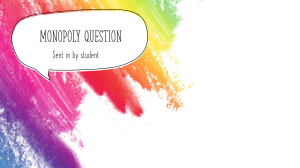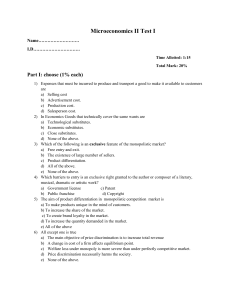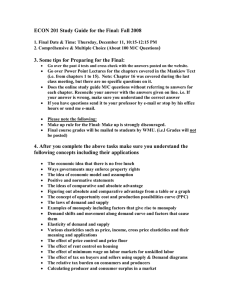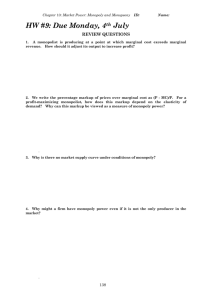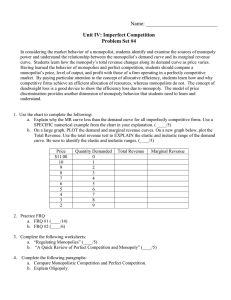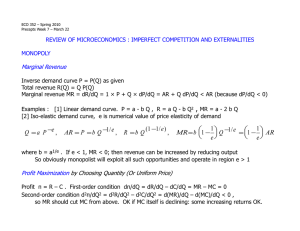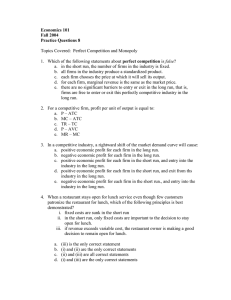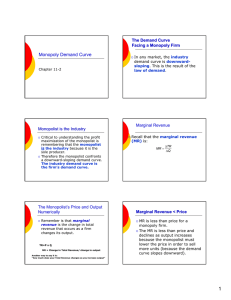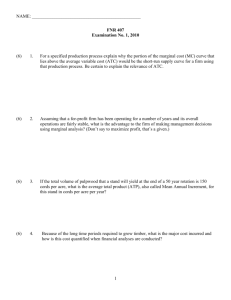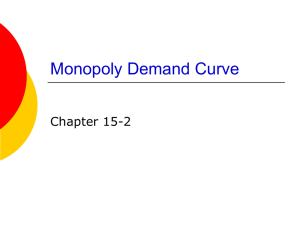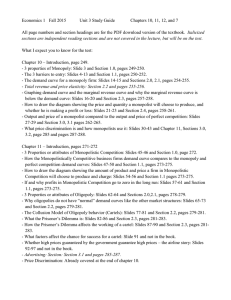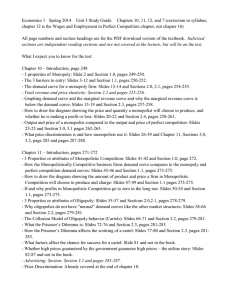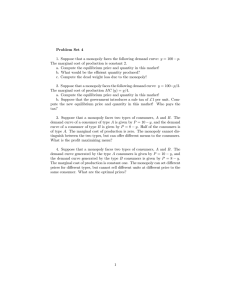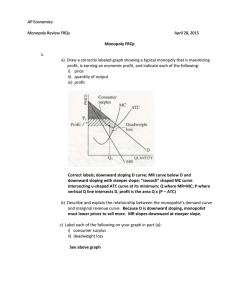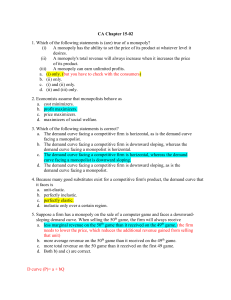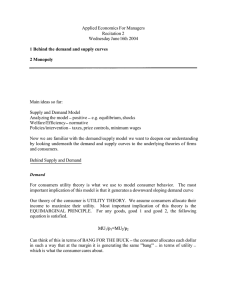Lesson 21 – Monopoly.PPT
advertisement
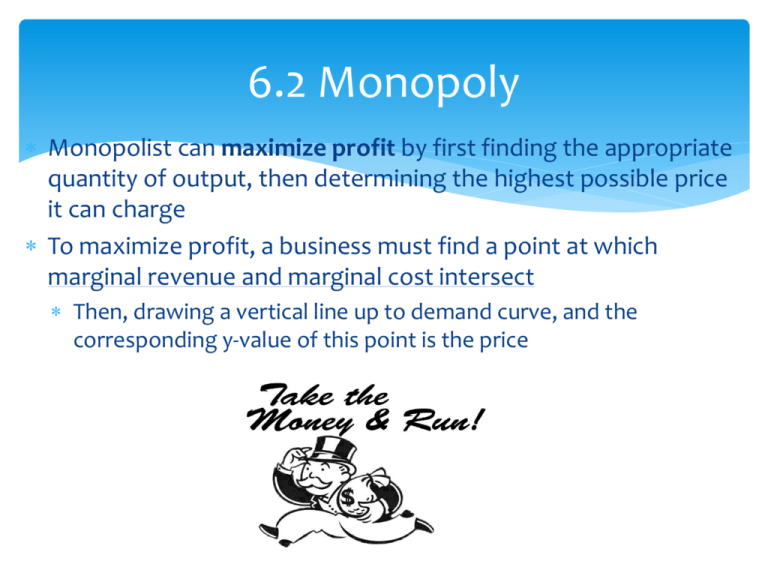
6.2 Monopoly Monopolist can maximize profit by first finding the appropriate quantity of output, then determining the highest possible price it can charge To maximize profit, a business must find a point at which marginal revenue and marginal cost intersect Then, drawing a vertical line up to demand curve, and the corresponding y-value of this point is the price Profit Maximization for a Monopolist On the graph: Profit-maximizing output is at intersection of MR and MC At this output, demand curve gives a price of $10 (draw vertical line up to demand curve then see corresponding y-point) The profit of this company is the difference between price (D) and average cost (ATC) – the area of the rectangle (600x (10 – 8.40)) Monopoly vs Perfect Competitor Recall: Demand Curve and Marginal Revenue Curve were the same for a Perfect Competitor Now: Marginal Revenue Curve is steeper than Demand Curve (not same curve anymore) for Monopoly Regulation of Natural Monopolies Natural Monopoly: Increasing returns to scale mean that the single business can produce a product at a significantly lower per-unit cost than could several companies Governments usually intervene on natural monopolies: Service is provided through a government-owned corporation Canada Post Gov’t regulates the single private company Canadian Radio-television and Telecommunications Commission Regulation of Natural Monopolies Public Agencies set a price for the monopolist to charge: Average-cost Pricing: the practice of setting price it equals average cost The regulating agency imposes a ceiling, such as 8 percent or 9 percent, on the profit rate the businesses can earn
